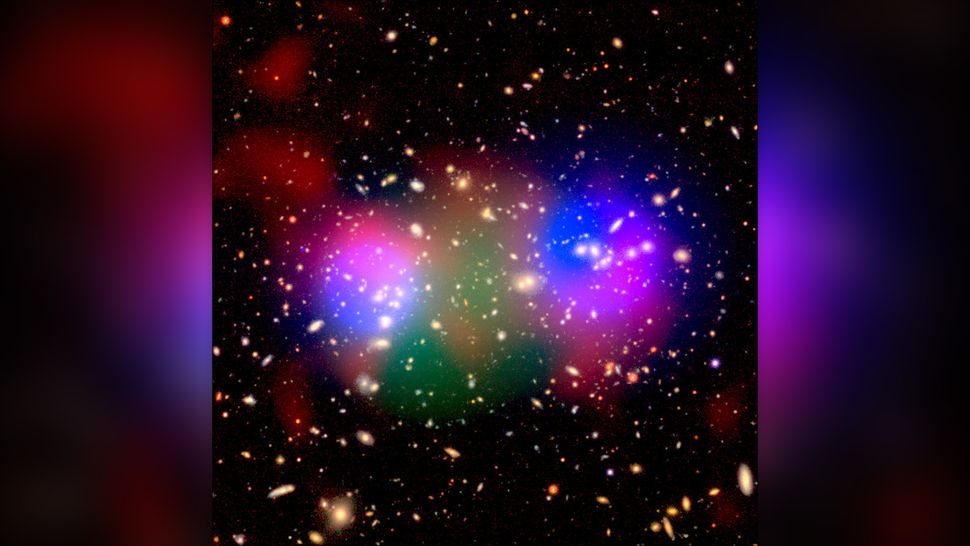Science
Related: About this forumThere may be a 'dark mirror' universe within ours where atoms failed to form, new study suggests
By Paul Sutter published about 3 hours ago
The invisible substance called dark matter remains one of the biggest mysteries in cosmology. Perhaps, a new study suggests, this strange substance arises from a 'dark mirror universe' that's been linked to ours since the dawn of time.

A galaxy cluster colorized to show invisible dark matter (blue) alongside regular, visible matter (red, green, and orange). (Image credit: Radio: GBT Green Bank Observatory/National Science Foundation (NSF); Optical: Subaru Tele-scope, National Astronomical Observatory of Japan/HSC-SSP collaboration; X-ray: European Space Agency (ESA)/XMM-Newton/XXL survey consortium.)
What if the world of dark matter was a mirror of our own, just with a broken set of rules? That might explain why dark matter appears to be so abundant yet invisible, a new theory suggests.
Dark matter is the mysterious, unknown substance that seems to make up the bulk of all the mass in the universe; for every 2 pounds (1 kilogram) of regular matter, there's roughly 10 pounds (5 kg) of dark matter. It doesn't interact with light or normal matter. The only way scientists can detect it is through its subtle gravitational influence on normal matter, such as the motions of stars within galaxies and the growth of super-large structures in cosmic time.
It might be easy to think that because matter and dark matter operate with different rules, one would be totally dominant over the other. But despite having wildly different properties, the amounts of normal matter and dark matter are still in the same ballpark. That seems like a strange coincidence. To explain this, scientists proposed there could be some sort of hidden link between them. They published their research Jan. 22 on the preprint journal arXiv.
The researchers posited that for every physical interaction in normal matter, there's a mirror of it in the world of dark matter. This would be a new kind of symmetry in nature, connecting the normal and dark matter worlds, the researchers said.
This symmetry would help explain why dark matter and regular matter have roughly the same abundances.
More:
https://www.livescience.com/space/cosmology/there-may-be-a-dark-mirror-universe-within-ours-where-atoms-failed-to-form-new-study-suggests
mobeau69
(12,205 posts)BComplex
(9,709 posts)That's amazing, Judi Lynn. Thanks so much for the education you bring to all of us here! ![]()
GreenWave
(12,129 posts)I look back 125 years ago when it was widely believed that the Milky Way was "all that's out there." To paraphrase Carl Sagan... this misconception has been disproved billions and billions of times.
Why the quick rush to judgment to presuppose our cosmos is "all that's out there." ?
JoseBalow
(9,058 posts)If dark matter is invisible, how can it be depicted in the blue areas of the image? Was it's gravitational influence somehow measured and added to the composite? Or is it just a theoretical representation?